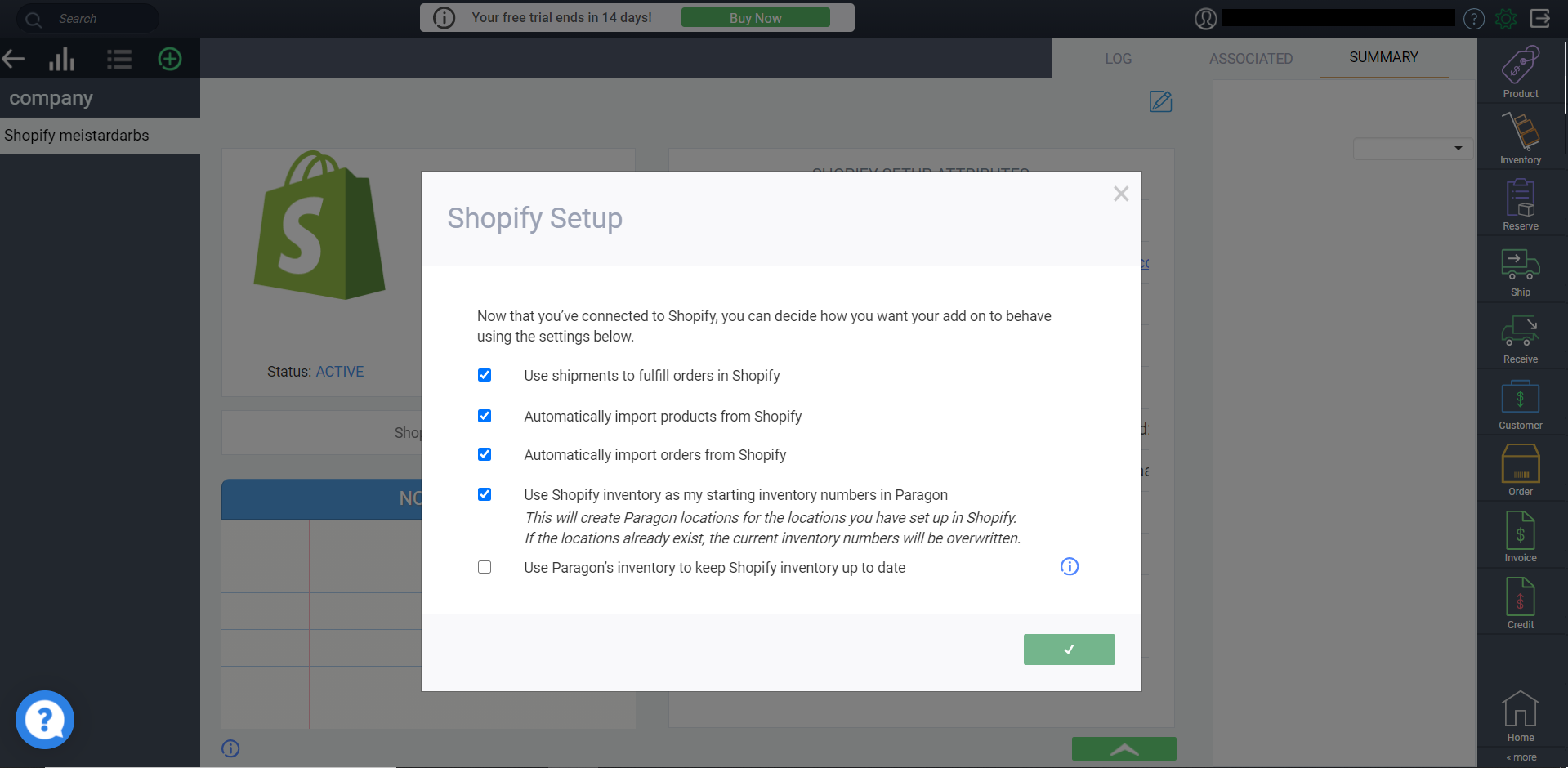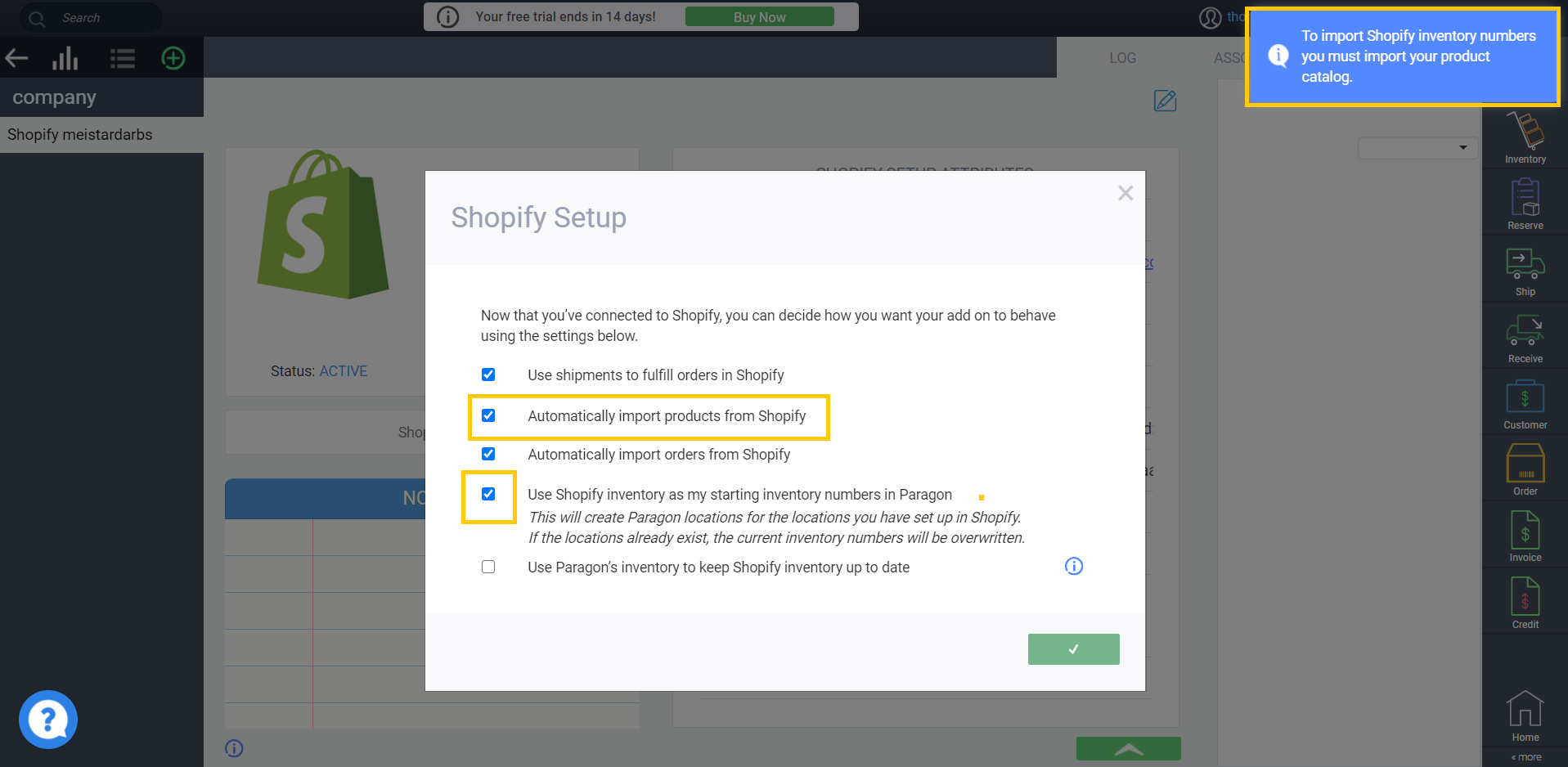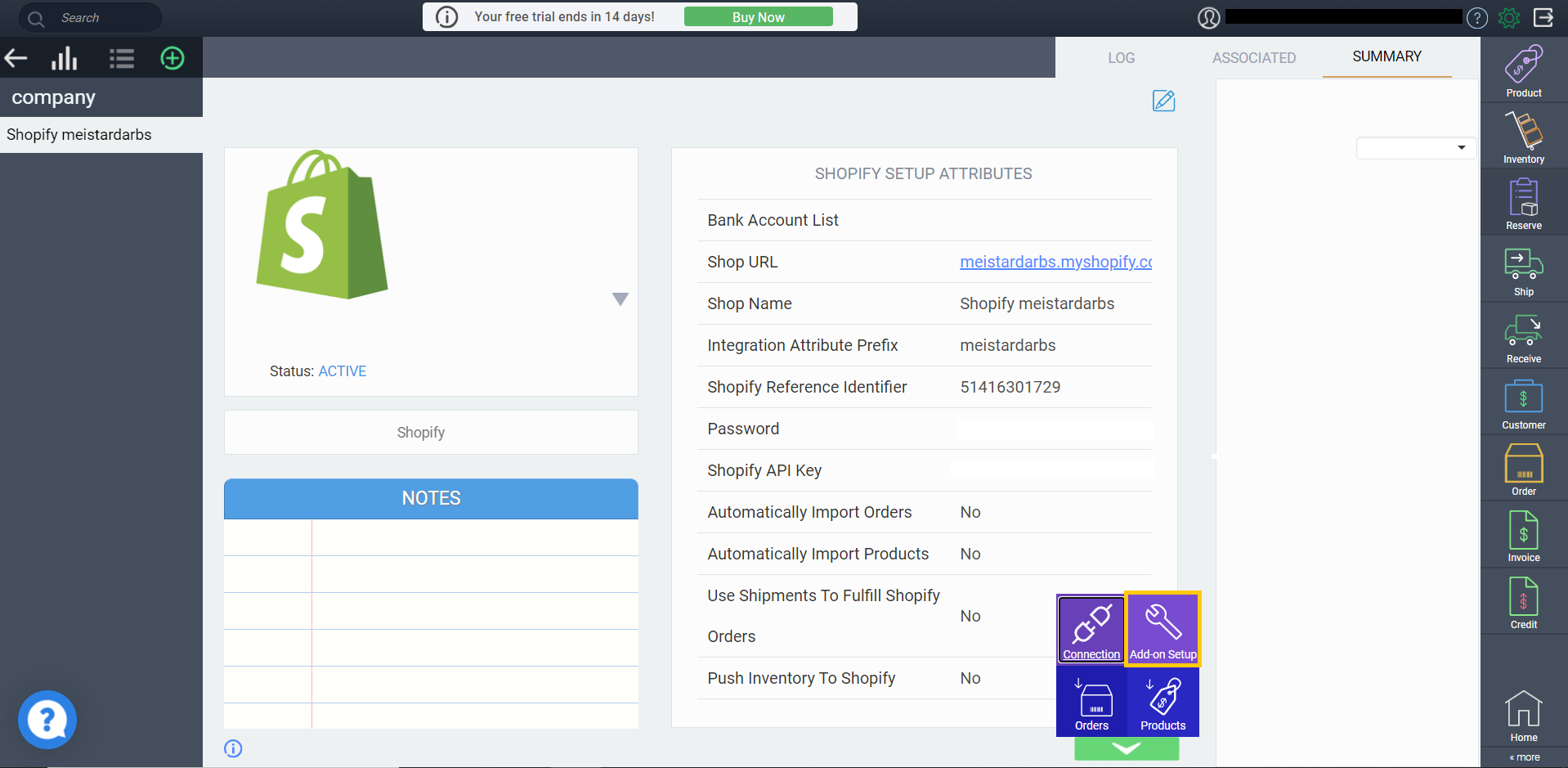Setting up Shopify
Introduction
Once you've connected Paragon to your Shop, your Shopify Add-On is set to active status. If this is the first add-on you're activating, the setup modal shown below will appear. It allows you to select and apply the settings you want when managing your integration. For a full walkthrough connecting Shopify to Paragon, read our article on How to connect and disconnect Paragon from Shopify .

Shopify settings
The meaning of each setting is as follows:
- Use shipments to fulfill orders: if a shipment that is linked to an imported order from Shopify is completed, the original order in Shopify will be marked as fulfilled.
- Automatically import products: if a new product is created in Shopify, it will be imported into Paragon automatically without having to use the product import action button.
- Automatically import orders: if a new order is created in Shopify, it will be imported into Paragon automatically without having to use the order import action button.
- Use Shopify inventory as my starting inventory numbers in Paragon: if you choose to turn on this setting, an initial import of inventory numbers will be done for your Shopify product catalog. It will also create locations that will correspond to the locations that you have set up in Shopify, allowing you to easily manage your inventory from within Paragon. However, this is only an initial inventory import. If you want to pull inventory from Shopify again, you can use the inventory action button.
- Use Paragon's inventory to keep Shopify inventory up to date: if you decide to use Paragon as your source of truth for your inventory numbers, turn on this setting. Any change to the inventory or available-to-sell in Paragon of an imported Shopify product will also update Shopify inventory.
If you decide to use Paragon inventory to keep Shopify inventory up to date but don't import your starting inventory from Shopify, Shopify's inventory will be overwritten and cleared. We recommend turning on both if you want to use Paragon as your source of truth.
Note that because inventory import relies on the products being imported, you cannot turn on either of the inventory settings without also enabling automatic import of products. If you try to do so, you will see a blue notification and the product import switch will be checked off for you.

Lastly, if you are connected to QuickBooks, or plan to later, and you want to track your Shopify profit from there, we recommend that you turn on automatic product and order import.
Once you are happy with your settings, click accept. You will see your chosen settings have been applied in the Shopify attribute panel.
Returning to the add-on setup screen
If you want to change your Shopify settings later, you can bring up the setup modal again by clicking the add-on setup action button.

What's next?
So now your Shopify add-on is ready to go and the orders can start flooding into Paragon. Perhaps our other Shopify articles could be useful to you:
Importing Shopify orders into Paragon
![paragon logo-1.png]](https://support.paragon-erp.com/hs-fs/hubfs/paragon%20logo-1.png?height=50&name=paragon%20logo-1.png)